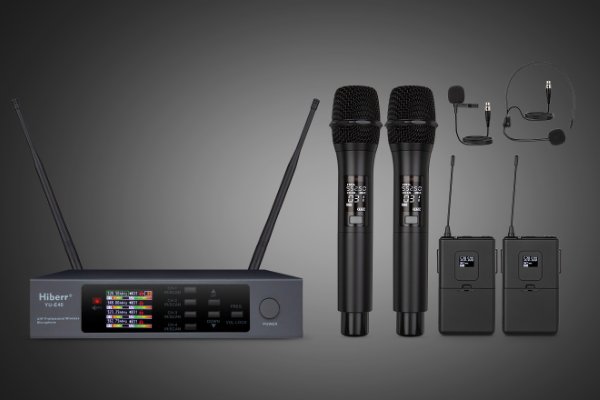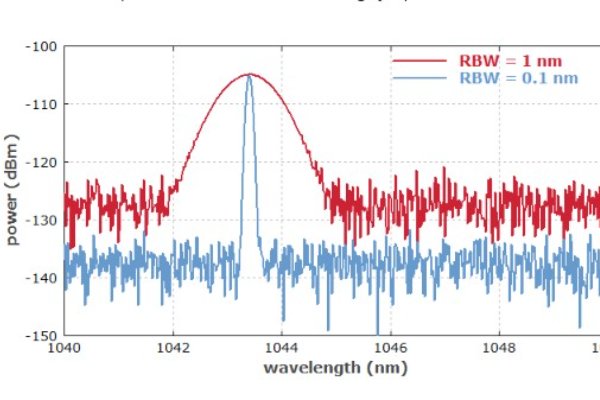Recent Posts
-
How to Reduce Wireless Microphone Background Noise
Wireless microphones are a popular choice for a variety of events, from speeches and church services to performances and presentations. However, background noise can often be a major issue. If you're struggling with unwanted noise, here are some effective tips to help you reduce wireless microphone background noise and improve your audio quality.
03/01/2025
-
Hiberr Microphones: Leading the Charge in Modern Audio Solutions
Microphones are more than just tools—they're instruments of communication, creativity, and collaboration. Hiberr, with its innovative designs and commitment to quality, is poised to redefine the audio landscape for the digital age.
10/08/2023
-
Understanding the Evolution and Importance of the Wireless Microphone
Understanding the Evolution and Importance of the Wireless Microphone in Modern Times
10/06/2023
-
Understanding Microphone Differences: Hosts vs. Singers
When choosing a microphone, understanding its primary use is essential. The difference between microphones tailored for hosts and those for singers is quite stark.
09/28/2023
-
What affects the receiving distance of uhf wireless microphone? How to solve?
Long-distance wireless microphone systems are pivotal in various events and settings. Their performance, however, can be affected by a myriad of factors. Understanding and addressing these factors can optimize your microphone's receiving distance. Here's a breakdown:
09/23/2023
-
What is the signal-to-noise ratio of a microphone?
The Signal-to-Noise Ratio (SNR) of a microphone measures the ratio between the desired audio signal and the undesired background noise inherent in the microphone. Essentially, it quantifies how much clearer the desired sound is compared to the background noise. It's typically expressed in decibels (dB). In the context of microphones, SNR often refers to the difference between the microphone's sensitivity and its self-noise or equivalent noise level.
09/22/2023
What are the advantages and disadvantages of 2.4G wireless microphone, VHF wireless microphone and UHF wireless microphone?
Wireless microphone systems have become popular because they offer mobility without the hindrance of cables. The frequency bands these microphones operate on (2.4G, VHF, and UHF) determine many of their characteristics. Here's a breakdown of the advantages and disadvantages of these three types of wireless microphones:
2.4G (2.4 GHz) Wireless Microphones:
Advantages:
License-Free: The 2.4 GHz band is globally accepted for wireless consumer devices, so these mics are typically license-free worldwide.
Ease of Setup: Many 2.4G systems offer automatic frequency selection and setup.
Cost: Generally, these microphones tend to be more affordable than UHF systems.
Disadvantages:
Congestion: Given that Wi-Fi, Bluetooth, and many other consumer devices also operate in the 2.4 GHz range, there's potential for interference.
Range: 2.4G microphones typically have a shorter range compared to UHF systems.
Latency: Some 2.4G systems can introduce noticeable latency, which might not be ideal for certain live performance applications.
VHF (Very High Frequency) Wireless Microphones:
Advantages:
Less Crowded: VHF frequencies tend to be less crowded than UHF in many areas, which can mean less interference.
Cost: Historically, VHF systems were often more affordable than UHF systems.
Disadvantages:
Limited Frequencies: There are fewer available frequencies within the VHF band for microphones, which can limit the number of systems you can operate simultaneously.
Bulkier Antennas: VHF wavelengths are longer, which means the antennas tend to be larger compared to UHF systems.
Range & Interference: VHF can be more susceptible to interference from TV broadcasts and other RF sources in certain areas.
UHF (Ultra High Frequency) Wireless Microphones:
Advantages:
Range: UHF systems generally offer a longer operating range than 2.4G and often VHF systems.
Selectable Frequencies: There's a broader frequency range in the UHF band, allowing for more channels and a higher chance of finding clear frequencies.
Reliability: Due to the range and available frequencies, UHF systems are often more reliable, especially in dense RF environments.
Smaller Antennas: Due to the shorter wavelengths of UHF, the antennas can be smaller compared to VHF.
Disadvantages:
Cost: High-quality UHF systems can be more expensive.
Licensing: Depending on the region or country, you may need a license to operate in certain UHF bands.
Spectrum Auctions: In some regions, parts of the UHF spectrum have been auctioned off to mobile broadband providers, reducing the available frequencies for wireless microphone use.




